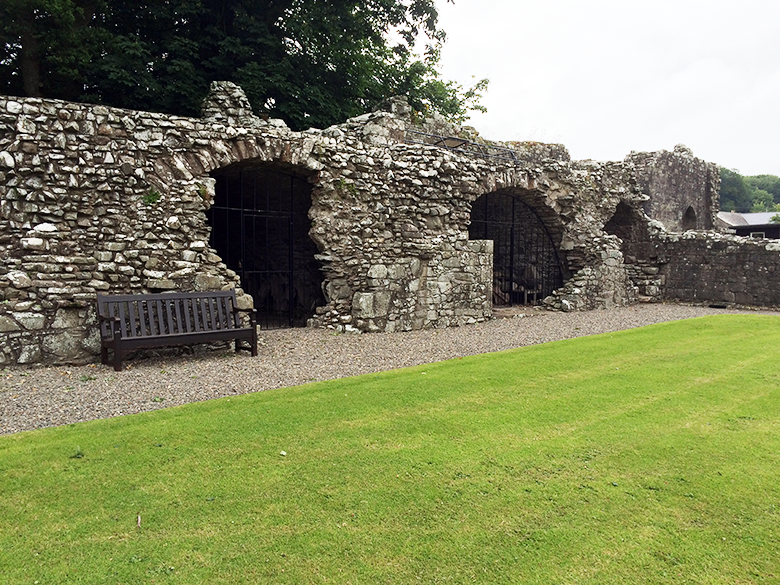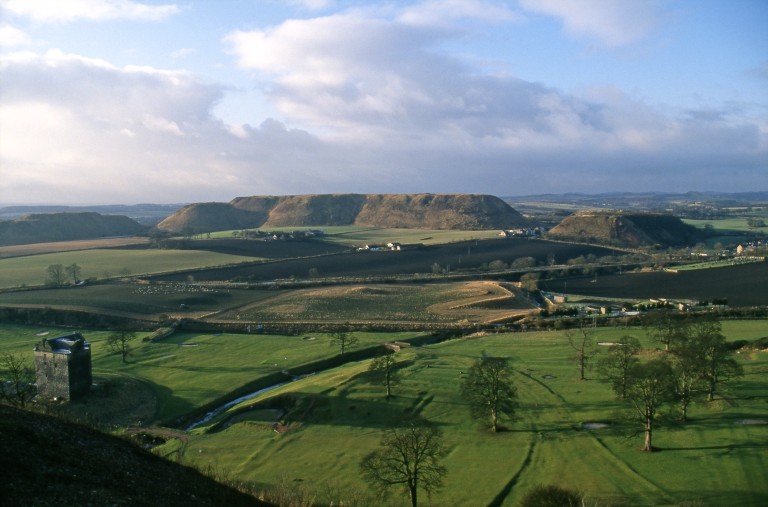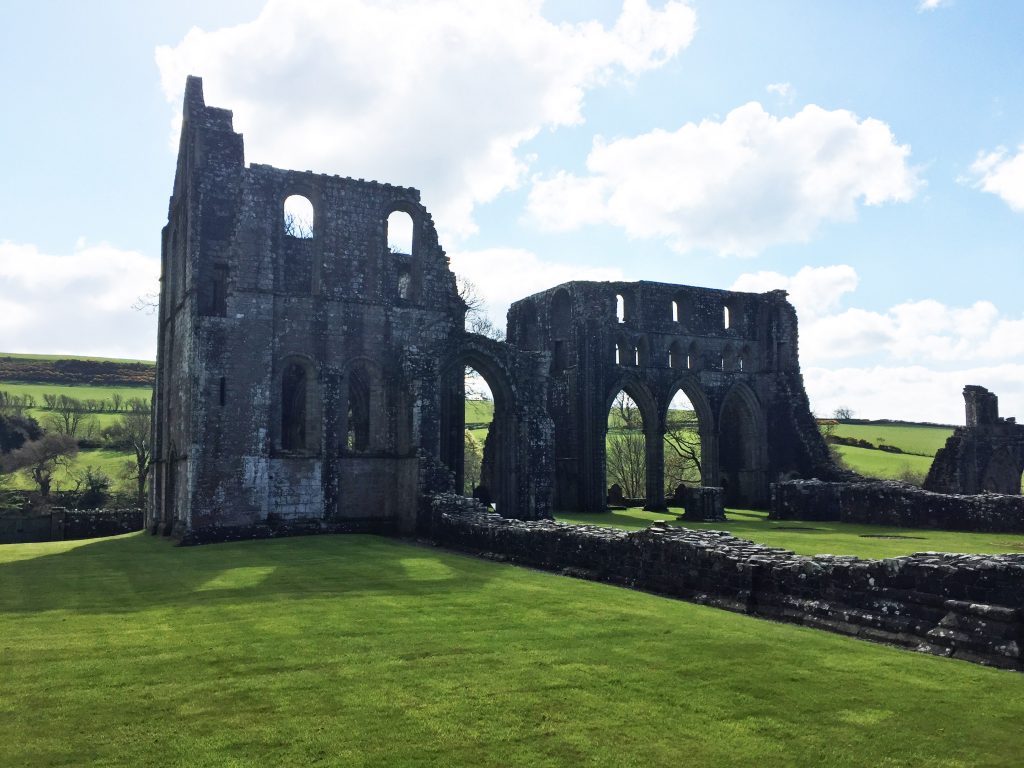Join us as we continue to follow in the fateful steps of Mary Queen of Scots. In Andrew’s last blog, we saw Mary escape from Lochleven Castle. Two weeks later, a fresh disaster has driven her to a make or break decision …
A peaceful retreat
If you’ve visited Dundrennan Abbey in Dumfries and Galloway, you’ll have been struck by the awesome scale of the surviving church architecture, the elegance and complexity of the stone-carving, the lush serenity of the setting.
What you may not have noticed is a much-depleted ruin beside the cloister, where the commendator’s house once stood.

The cloisters at Dundrennan Abbey where the commendator’s house once stood.
It may seem a bleak and unwelcoming structure now, but try placing yourself in the battered shoes of Mary Queen of Scots, who was here 450 years ago today, on the run and on the brink of collapse…
Comeback queen
Two weeks ago, your heart bounded with excitement as you were welcomed ashore from Lochleven Castle, your prison for nearly a year. George Douglas had successfully sprung you from his brother’s stronghold.
At last, you were among friends. By the end of the next day, you had arrived safely at Niddry Castle in West Lothian, seat of your loyal ally George, Lord Seton. You were on the way to overthrowing your enemies and recovering your kingdom.

At Niddry Castle Mary was among friends
From Niddry, you rode south-west into Hamilton territory, gaining confidence and followers as you went. The powerful Hamiltons were close relatives, and now declared allegiance to your cause. You spent an exhilarating week in their castles at Hamilton and Craignethan, and by the end of it you had about 6,000 followers: a viable army!
Best man for the job?
One prominent new recruit was Archibald Campbell, 5th Earl of Argyll, a defector from your enemies the Confederate Lords. He was one of the most powerful men in Scotland, and you gave him command of your new army.
You were in a strong position now. Your treacherous half-brother James, Earl of Moray, now governing Scotland as Regent, was caught off-guard. His army was smaller, weaker and less determined.
Go west
But you decided to consolidate your position. You headed further west, towards Dumbarton Castle, an impregnable royal fortress where you had spent time as a child, waiting for the right winds to carry you to France.

Mary never reached the strong fortress of Dumbarton Castle.
From Dumbarton, you might summon assistance from the French. You had been their queen, after all. You had grown up with the current king, your brother-in-law Charles IX. And France was a Catholic country, which could be expected to support you, a deposed Catholic queen, against your Protestant usurpers.
Ah, but you never reached Dumbarton.
Langside, bloody Langside
Your route took you close to Langside, just south of Glasgow. And that is where disaster struck, three days ago, on 13 May. Moray’s army had begun to assemble there, and hotheaded Claud Hamilton, Lord Paisley, seized the chance to launch a surprise attack. He led a party of his men into what amounted to an ambush.
If your army had responded quickly and effectively, the day might have been saved. But at this point your fortunes suffered an almost farcical blow. Your new military commander, the Earl of Argyll, suffered a seizure and collapsed, at exactly the moment when you needed his leadership and resolve.
Moray’s army was not slow to take advantage. Within an hour, your army was routed and scattered. Your campaign had fallen apart before your eyes. You fled south, through Hamilton lands into the south-west, where support for you was still strong.
Running scared
Those three days, you lived like an escaped convict. To avoid being recognised, you had your famous russet hair cut short. You rode without stopping, sleeping rough and – as you wrote bitterly in one letter – living on oats and sour milk.
In this way, you made your way to Terregles, near Dumfries, owned your allies the Maxwells. From there you rode nearly 30 miles overnight, south-west to Dundrennan Abbey. Here you were welcomed by the commendator, Edward Maxwell.
Like most commendators, Maxwell did not have a background in the church: your grandfather James IV began appointing people like him in place of abbots in the early 1500s. The post was more administrative than spiritual, mainly relating to an abbey’s considerable financial affairs.
Maxwell’s residence at Dundrennan would have been relatively small but handsomely built and comfortably furnished. After your days on the lam, it seems almost luxurious.

Edward Maxwell’s residence was in the grounds of Dundrennan Abbey.
The last stand
How long will you stay at Dundrennan, warming your battered toes at Maxwell’s fire and restoring your spirits with a square meal? We don’t know. Possibly you’ll sleep here for one night; perhaps you can only bear to stay put for a few hours, always mindful of your pursuers.
But by now you have decided: you’ll sail for England and throw yourself on the mercy of your cousin, Queen Elizabeth. She has the power to help you: surely she will not deny assistance to a fellow queen – a queen who shares her Tudor blood.
From here, you will ride the short distance to the Solway coast, board a boat and cross to Cumbria, setting foot in England for the first time in your life. What you cannot guess, as you steel yourself for the journey, is that you will never see your homeland again.

